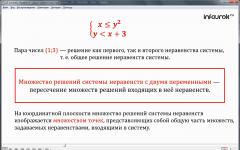Common sense dictates that people will never know for sure how the Universe formed. Did it arise on its own? Or did someone create it? It is hard to believe that it is possible to obtain accurate answers to other fundamental questions. Is it infinite? Or does the universe still have an edge. And in general - what is it?
However, physicists are not embarrassed by uncertainty - they regularly present humanity with original hypotheses. And here is the most amazing of them: the Universe is a hologram. A kind of projection.
The first to come up with such an unexpected idea was David Bohm, a physicist from University of London. Back in the 80s. After his colleague from the University of Paris, Alain Aspect, experimentally showed: elementary particles can instantly exchange information at any distance - even millions of light years. That is, contrary to Einstein, to carry out interactions at superluminal speeds and, in fact, overcome the time barrier. This, Bohm suggested, could be possible if only our world is a hologram. And each section contains information about the whole - about the entire Universe.
Complete absurdity, it would seem. But in the 90s he was supported by the laureate Nobel Prize in physics Gerard 't Hooft from Utrecht University (Netherlands) and Leonard Susskind from Stanford University (USA). From their explanations it followed that the Universe is a holographic projection of physical processes that occur in two-dimensional space. That is, on a certain plane. You can imagine this by looking at any holographic picture. For example, placed on a credit card. The picture is flat, but creates the illusion of a three-dimensional object.
It is very difficult, frankly speaking, impossible to believe that we are an illusion, a phantom, a fable. Or at least a matrix, as in the film of the same name. But recently there was almost material confirmation of this.
In Germany, near Hannover, a giant interferometer, a device called GEO600, has been operating for the seventh year. In scale, it is only slightly inferior to the scandalous hadron collider. With the help of an interferometer, physicists intend to catch the so-called gravitational waves - those that should exist, if you believe the conclusions of Einstein's theory of relativity. They are a kind of ripple in the fabric of space-time, which must arise from some cataclysms in the Universe, such as supernova explosions. Like circles on the water from a pebble.
The essence of fishing is simple. Two laser beams are directed perpendicular to each other through pipes 600 meters long. Then they bring it together. And they look at the result - at the interference pattern. If a wave comes, it will compress space in one direction and stretch it in a perpendicular direction. The distances traveled by the rays will change. And this will be visible in that same picture.
Alas, for seven years nothing resembling gravitational waves could be noticed. But scientists may have made a much more exciting discovery. Namely, to detect the “grains” that make up our specific space-time. And this, as it turns out, is directly related to the holographic image of the Universe.
May they forgive me quantum physicists for a crude explanation, but from their abstruse theories this is what follows. The fabric of space-time is grainy. Like a photograph. If you tirelessly enlarge it (as if on a computer), then a moment will come when the “image” will seem to be made up of pixels - such unimaginably small elements. And it is generally accepted that the linear size of such an element - the so-called Planck length - cannot be less than 1.6 by 10 to the minus 35th power of a meter. It is incomparably smaller than a proton. The Universe supposedly consists of these “grains”. It is impossible to confirm experimentally - you can only believe.
There is reason to believe that experiments at GEO600 have shown that in reality the “grains” are much larger—billions of billions of times. And they are cubes with a side of 10 to the minus 16th power of a meter.
The existence of large pixels was recently announced by one of the discoverers dark energy-Craig Hogan, director of Fermilab's Center for Particle Astrophysics and part-time professor of astronomy and astrophysics at the University of Chicago. He suggested that they could have been encountered in experiments on catching gravitational waves. I asked if my colleagues were seeing something strange, like interference. And I received the answer - they are watching. And it’s precisely interference—a kind of “noise” that interferes with further work.
Hogan believes that researchers have discovered those very large pixels in the fabric of space-time - they are the ones that “make noise”, shaking.
Hogan imagines the Universe as a sphere, the surface of which is covered with elements of Planck length. And each carries a unit of information - a bit. And what’s inside is the hologram they created.
There is, of course, a paradox here. According to the holographic principle, the amount of information contained on the surface of the sphere must match the amount inside. And there is clearly more of it in volume.
No problem, the scientist believes. If the “internal” pixels turn out to be much larger than the “external” ones, then the desired equality will be met. And so it happened. In terms of size.
By talking about the hologram, scientists - and there are already many of them - have given the universe an even more intricate essence than could have been imagined before. Here we certainly cannot avoid the question: who tried so hard? Perhaps God is a more high order than us - primitive holograms. But then it is hardly worth looking for it in our Universe. He couldn’t have created himself and now be inside in the form of a hologram?! But the Creator could well be outside. But we don't see this.
Since 2001, a probe called WMAP (Wilkinson Microwave Anisotropy Probe) has been flying in space. It catches “signals” - the so-called fluctuations of the microwave background - radiation that fills space. To date, I have caught so much that it was possible to create a map of this radiation - scientists call it relict radiation. Like, it has been preserved since the birth of the Universe.
Analyzing the map, astrophysicists accurately, as it seems to them, calculated the age of the Universe - it was created exactly 13.7 billion years ago. We concluded that the Universe is not infinite. And it is a ball, as if closed on itself.
The ball is, of course, huge, says Douglas Scott from the University of British Columbia (Canada), but not so huge as to be considered infinite.
“Holographists” also talk about the ball. And this gives us illusory hopes. It is possible that by creating suitable tools, scientists will be able to penetrate inside this hologram. And they will begin to extract recorded information from it - pictures of the past, and even the future. Or distant worlds. Suddenly the opportunity to travel back and forth through space-time will open up. Since both we and it are holograms...
- was filled with the energy inherent in the space itself;
- expanded in a constant exponential order;
- created new space so quickly that the smallest physical length, the Planck length, was stretched to the size of the Universe observable today every 10 -32 seconds.
That's right, inflation has ended in our region of the Universe. But there are several questions we don't yet know the answer to that may determine the true size of the Universe, as well as whether it is infinite or not.
How large was the post-inflation region of the Universe that gave birth to our Big Bang?
Looking at our Universe today, at the uniform afterglow of the Big Bang, and at the flatness of the Universe, there is only so much we can learn. We can determine the highest limit of the energy scale at which inflation occurred; we can determine how much of the universe has gone through inflation; we can put a lower limit on how long inflation should have lasted. But the pocket of the inflationary Universe in which our own was born may be much, much larger than the lower limit. It could be hundreds, millions, or googols of times larger than we can observe... or truly infinite. But until we can watch bigger than the universe With everything that is currently available to us, we will not have enough information to answer this question.
Is the idea of “eternal inflation” true?
If you think inflation should be quantum field, then at any time during this phase of exponential expansion there is a chance that inflation will end with a Big Bang, and a chance that inflation will continue, creating more and more space. These are calculations we can very well make (with a few assumptions) and they will lead to the inevitable conclusion: if you want inflation to produce the Universe we observe, then inflation will always create more space that continues to expand, compared to regions that have already ended in Greater Spaces. Explosions. And while our observable Universe may have emerged from the end of inflation in our region of space some 13.8 billion years ago, there are regions where inflation continues - creating more and more space and giving birth to Big Bangs - to this day. This idea is called “eternal inflation” and is generally accepted by the theoretical physics community. And then how big is the entire unobservable Universe?
How long did inflation last until its end and the Big Bang?
We can only see the observable Universe created at the end of inflation and our Big Bang. We know that this inflation must have lasted at least 10 -32 seconds or so, but could well have lasted longer. But how much longer? For seconds? Years? Billions of years? Or endlessly? Has the universe always been inflationary? Did it have a beginning? Did it arise from a previous state that was eternal? Or perhaps all of space and time arose from “nothing” some time ago? There are many possibilities, but all of them are unverifiable and unprovable at this time.
According to our best observations, we know that the Universe is much, much larger than the part we are lucky enough to observe. Beyond what we see, there is much more of the Universe, with the same laws of physics, with the same structures (stars, galaxies, clusters, filaments, voids, etc.) and with the same chances for development difficult life. There must also be a finite size of the “bubbles” in which inflation ends, and a gigantic number of such bubbles contained in a gigantic space-time inflating during the inflation process. But there is a limit to any large numbers; they are not infinite. And only if inflation did not continue over an infinitely extended time, the Universe must be finite.
The problem with all of this is that we only know how to access the information available in our observable universe: those 46 billion light years in all directions. The answer to the greatest of all questions, whether the Universe is finite or infinite, may be encoded in this Universe itself, but our hands are too tied to know it. Unfortunately, the physics we have does not give us other options.
IN everyday life a person most often has to deal with finite quantities. Therefore, it can be very difficult to visualize an unlimited infinity. This concept is shrouded in an aura of mystery and unusualness, which is mixed with reverence for the Universe, the boundaries of which are almost impossible to determine.
The spatial infinity of the world belongs to the most complex and controversial scientific problems. Ancient philosophers and astronomers tried to resolve this issue through the simplest logical constructions. To do this, it was enough to assume that it was possible to reach the supposed edge of the Universe. But if you stretch out your hand at this moment, the border moves some distance away. This operation can be repeated countless times, which proves the infinity of the Universe.
The infinity of the Universe is difficult to imagine, but no less difficult is how a limited world might look. Even for those who are not very advanced in the study of cosmology, in this case a natural question arises: what is beyond the boundary of the Universe? However, such reasoning, based on common sense and everyday experience, cannot serve as a solid basis for strict scientific conclusions.
Modern ideas about the infinity of the Universe
Modern scientists, exploring multiple cosmological paradoxes, have come to the conclusion that the existence of a finite Universe, in principle, contradicts the laws of physics. The world beyond planet Earth apparently has no boundaries either in space or time. In this sense, infinity implies that neither the amount of matter contained in the Universe nor its geometric dimensions can be expressed even by the most a large number(“Evolution of the Universe”, I.D. Novikov, 1983).
Even if we take into account the hypothesis that the Universe was formed about 14 billion years ago as a result of the so-called big bang, this may well only mean that in those extremely distant times the world went through another stage of natural transformation. On the whole, the infinite Universe never came into being through an initial impulse or the inexplicable development of some immaterial object. The assumption of an infinite Universe puts an end to the hypothesis of the Divine creation of the world.
In 2014, American astronomers published the results of the latest research that confirms the hypothesis of the existence of an infinite and flat Universe. Scientists have measured with high precision the distance between galaxies located several billion light years apart. It turned out that these colossal star clusters are located in circles with a constant radius. The cosmological model constructed by the researchers indirectly proves that the Universe is infinite both in space and time.
Doctor pedagogical sciences E. LEVITAN.
Peer into the previously unattainable depths of the Universe.
An inquisitive pilgrim has reached the “end of the world” and is trying to see: what is there, beyond the edge?
Illustration for the hypothesis of the birth of metagalaxies from a decaying giant bubble. The bubble grew to enormous sizes at the stage of rapid “inflation” of the Universe. (Drawing from the magazine "Earth and Universe".)
Isn't it a strange title for an article? Isn't there only one Universe? By the end of the twentieth century, it became clear that the picture of the universe is immeasurably more complex than that which seemed completely obvious a hundred years ago. Neither the Earth, nor the Sun, nor our Galaxy turned out to be the center of the Universe. The geocentric, heliocentric and galactocentric systems of the world have been replaced by the idea that we live in an expanding Metagalaxy (our Universe). There are countless galaxies in it. Each, like ours, consists of tens or even hundreds of billions of star-suns. And there is no center. It only seems to the inhabitants of each galaxy that other star islands are scattering from them in all directions. A few decades ago, astronomers could only assume that planetary systems similar to our solar system existed somewhere. Now, with a high degree of certainty, they name a number of stars in which “protoplanetary disks” have been discovered (planets will one day form from them), and they confidently talk about the discovery of several planetary systems.
The process of learning about the Universe is endless. And the further we go, the more daring, sometimes seemingly absolutely fantastic, tasks the researchers set for themselves. So why not assume that astronomers will someday discover other universes? After all, it is quite likely that our Metagalaxy is not the entire Universe, but only some part of it...
It is unlikely that modern astronomers and even astronomers of the very distant future will ever be able to see other universes with their own eyes. And yet science already has some evidence that our Metagalaxy may turn out to be one of many mini-universes.
Hardly anyone doubts that life and intelligence can arise, exist and develop only at a certain stage in the evolution of the Universe. It is difficult to imagine that any forms of life appeared earlier than the stars and the planets moving around them. And not every planet, as we know, is suitable for life. Certain conditions are necessary: a fairly narrow temperature range, air composition suitable for breathing, water... In solar system The Earth found itself in such a “belt of life.” And our Sun is probably located in the “life belt” of the Galaxy (at a certain distance from its center).
Many extremely faint (in brightness) and distant galaxies have been photographed in this way. The most striking of them were able to examine some details: structure, structural features. The brightness of the faintest galaxies in the image is 27.5 m, and the point objects (stars) are even fainter (up to 28.1 m)! Let us recall that with the naked eye, people with good vision and under the most favorable observation conditions see stars of approximately 6 m (these are 250 million times brighter objects than those with a magnitude of 27 m).
The similar ground-based telescopes currently being created are already comparable in their capabilities to the capabilities of the Hubble Space Telescope, and in some ways even surpass them.
What conditions are needed for stars and planets to arise? First of all, this is due to such fundamental physical constants as the gravitational constant and the constants of other physical interactions (weak, electromagnetic and strong). The numerical values of these constants are well known to physicists. Even schoolchildren, studying the law of universal gravitation, become familiar with the constant of gravity. Students from the course general physics They will also learn about the constants of three other types of physical interaction.
More recently, astrophysicists and specialists in the field of cosmology have realized that it is precisely the existing values of the constants of physical interactions that are necessary for the Universe to be what it is. With other physical constants, the Universe would be completely different. For example, the lifetime of the Sun could be only 50 million years (this is too short for the emergence and development of life on planets). Or, say, if the Universe consisted only of hydrogen or only helium, this would also make it completely lifeless. Variants of the Universe with other masses of protons, neutrons, and electrons are in no way suitable for life in the form in which we know it. Calculations convince us: we need elementary particles exactly as they are! And the dimension of space is of fundamental importance for the existence of both planetary systems and individual atoms (with electrons moving around the nuclei). We live in a three-dimensional world and could not live in a world with more or fewer dimensions.
It turns out that everything in the Universe seems to be “adjusted” so that life in it can appear and develop! We, of course, painted a very simplified picture, because not only physics, but also chemistry and biology play a huge role in the emergence and development of life. However, with a different physics, both chemistry and biology could become different...
All these arguments lead to what in philosophy is called the anthropic principle. This is an attempt to consider the Universe in a “human-dimensional” dimension, that is, from the point of view of its existence. The anthropic principle itself cannot explain why the Universe is the way we observe it. But to some extent it helps researchers formulate new problems. For example, the amazing “adjustment” of the fundamental properties of our Universe can be considered as a circumstance indicating the uniqueness of our Universe. And from here, it seems, it’s one step to the hypothesis about the existence of completely different universes, worlds that are completely different from ours. And their number, in principle, can be unlimited.
Now let's try to approach the problem of the existence of other universes from the standpoint of modern cosmology, a science that studies the Universe as a whole (as opposed to cosmogony, which studies the origin of planets, stars, and galaxies).
Remember, the discovery that the Metagalaxy is expanding almost immediately led to the hypothesis of the Big Bang (see "Science and Life" No. 2, 1998). It is believed to have occurred approximately 15 billion years ago. Very dense and hot matter passed through one after another stages of the “hot Universe”. Thus, 1 billion years after the Big Bang, “protogalaxies” began to emerge from the clouds of hydrogen and helium that had formed by that time, and the first stars appeared in them. The “hot Universe” hypothesis is based on calculations that allow us to trace the history of the early Universe starting literally from the first second.
Here is what our famous physicist Academician Ya. B. Zeldovich wrote about this: “The Big Bang theory at the moment does not have any noticeable shortcomings. I would even say that it is as reliably established and true as it is true that the Earth rotates around the Sun. Both theories occupied a central place in the picture of the universe of their time, and both had many opponents who argued that the new ideas contained in them were absurd and contradictory. common sense. But such speeches are not able to hinder the success of new theories."
This was said in the early 80s, when the first attempts were already being made to significantly supplement the “hot Universe” hypothesis with an important idea about what happened in the first second of “creation”, when the temperature was above 10 28 K. Take another step towards " "from the very beginning" was possible thanks to the latest achievements in particle physics. It was at the intersection of physics and astrophysics that the “inflating Universe” hypothesis began to develop (see “Science and Life” No. 8, 1985). Due to its unusual nature, the “inflating Universe” hypothesis can be considered one of the most “crazy” ones. However, it is known from the history of science that it is precisely such hypotheses and theories that often become important milestones in the development of science.
The essence of the “inflating Universe” hypothesis is that at the “very beginning” the Universe expanded monstrously quickly. In just 10 -32 s, the size of the nascent Universe grew not 10 times, as would be the case with a “normal” expansion, but 10 50 or even 10 1000000 times. The expansion occurred at an accelerated rate, but the energy per unit volume remained unchanged. Scientists prove that the initial moments of expansion occurred in a “vacuum”. This word is put in quotation marks here, since the vacuum was not ordinary, but false, because it is difficult to call a “vacuum” with a density of 10 77 kg/m 3 ordinary! From such a false (or physical) vacuum, which had amazing properties (for example, negative pressure), not one, but many metagalaxies (including, of course, ours) could be formed. And each of them is a mini-universe with its own set of physical constants, its own structure and other inherent features (for more information about this, see “Earth and the Universe” No. 1, 1989).
But where are these “relatives” of our Metagalaxy? In all likelihood, they, like our Universe, were formed as a result of the “inflation” of a domain (“domains” from the French domaine - area, sphere), into which the very early Universe immediately broke up. Since each such region has inflated to a size exceeding the current size of the Metagalaxy, their boundaries are separated from each other by enormous distances. Perhaps the nearest mini-universe is located at a distance of about 10 35 light years from us. Let us recall that the size of the Metagalaxy is “only” 10 10 light years! It turns out that not next to us, but somewhere very, very far from each other, there exist other, probably completely outlandish, according to our concepts, worlds...
So, it is possible that the world we live in is much more complex than hitherto assumed. It is likely that it consists of countless universes in the universe. We still know practically nothing about this Big Universe, complex and amazingly diverse. But we still seem to know one thing. No matter how far other mini-worlds are from us, each of them is real. They are not fictional, like some of the now fashionable “parallel” worlds, which are now often talked about by people far from science.
Well, what happens in the end? Stars, planets, galaxies, metagalaxies all together occupy only the tiniest place in the boundless expanses of extremely rarefied matter... And there is nothing else in the Universe? It’s too simple... It’s somehow even hard to believe.
And astrophysicists have been looking for something in the Universe for a long time. Observations indicate the existence of “hidden mass,” some kind of invisible “dark” matter. It cannot be seen even with the most powerful telescope, but it manifests itself through its gravitational effect on ordinary matter. Until quite recently, astrophysicists assumed that in galaxies and in the space between them there is approximately the same amount of such hidden matter as there is observable matter. However, recently many researchers have come to an even more sensational conclusion: there is no more than five percent of “normal” matter in our Universe, the rest is “invisible.”
It is assumed that 70 percent of them are quantum mechanical, vacuum structures evenly distributed in space (it is they that determine the expansion of the Metagalaxy), and 25 percent are various exotic objects. For example, low-mass black holes, almost pointlike; very extended objects - “strings”; domain walls, which we have already mentioned. But in addition to such objects, whole classes of hypothetical elementary particles, for example “mirror particles,” can make up the “hidden” mass. The famous Russian astrophysicist, Academician of the Russian Academy of Sciences N.S. Kardashev (once upon a time, both of us were active members of the astronomical circle at the Moscow Planetarium), suggests that the “mirror world” invisible to us with its planets and stars may consist of “mirror particles”. . And the substance in the “mirror world” is approximately five times greater than in ours. It turns out that scientists have some reason to believe that the “mirror world” seems to permeate ours. It’s just that we haven’t been able to find it yet.
The idea is almost fabulous, fantastic. But who knows, maybe one of you - current astronomy lovers - will become a researcher in the coming 21st century and will be able to uncover the secret of the “mirror Universe”.
Publications on the topic in "Science and Life"
Shulga V. Cosmic lenses and the search for dark matter in the Universe. - 1994, No. 2.
Roizen I. The Universe between a moment and eternity. - 1996, No. 11, 12.
Sazhin M., Shulga V. Mysteries of cosmic strings. - 1998, No. 4.
After Einstein had largely completed his experiment with the relativistic theory of gravity, he repeatedly tried to build on it his model of the universe, which many consider to be perhaps the most important part of his work.
However, Einstein’s equation of gravity, with the same assumption of a uniform distribution of “matter” (“homogeneity and isotropy of space”), did not provide relief from cosmological paradoxes: the “universe” turned out to be unstable, and in order to prevent its contraction by gravity, Einstein did not find anything better, how, like Zeliger, insert another term into your equation - the same universal so-called cosmological constant. This constant expresses the hypothetical force of repulsion between stars. Therefore, even in the absence of masses in the relativistic de Sitter model, a constant negative curvature of space-time is obtained.
Under such conditions, the solution of gravitational equations gave Einstein a finite world, closed in itself due to the “curvature of space”, like a sphere of finite radius - mathematical model in the form of a cylinder, where curved three-dimensional space forms its surface, and time is an uncurved dimension running along the generatrix of the cylinder.
The Universe has become “limitless”: moving along a spherical surface, it is clear that it is impossible to encounter any boundary, but nevertheless it is not infinite, but finite, so that light, like Magellan, can go around it and return from the other side. Thus, it turns out that an observatory, observing through a fantastically strong telescope two different stars on opposite sides of the sky, may turn out to see the same star from its opposite sides, and their identity can be established by some features of the spectrum. So it turns out that the closedness of the world turns out to be accessible to experimental observation.
Based on such a model, it turns out that the volume of the world, as well as the mass of its matter, turns out to be equal to a well-defined finite value. The radius of curvature depends on the amount of “matter” (mass) and its rarefaction (density) in the universe.
Cosmologists began the great calculations of the “radius of the world.” According to Einstein, it is equal to 2 billion light years! Beyond this radius, due to the general “curvature of space,” there are no rays or bodies; can't go out.
This “modern idea” of replacing infinity with limitless closure, where reproaches for finitude are said to be a “misunderstanding” because there are no “finite straight lines”, arose at least in the middle of the nineteenth century, when it was carried out by Riemann 3.
And for a century and a half now, it has been explained by a parable about the instructive limitations of creatures flat, like shadows, crawling on a two-dimensional ball: knowing neither height nor depth, the wise “flat creatures” discover with amazement that their world has neither beginning nor end and still finite.
On this basis, the question itself: what lies beyond the boundaries of the closed universe? - according to positivist custom, they respond only with condescending irony - as “meaningless”, because the sphere has no boundaries.
As for Olbers' photometric paradox, Einstein's static model did not give even a semblance of a resolution, since light must spin forever in it.
The opposition of attraction and repulsion meant the instability of the universe: the slightest push - and the model would either begin to expand - and then our island of stars and light would dissipate in the endless ocean, the world would be devastated. Or shrink - depending on what outweighs, what is the density of matter in the world.
In 1922, Leningrad mathematician A. A. Friedman solved Einstein’s equations without a cosmological term and found that the universe should expand if the density of matter in space is greater than 2 x 10 to the minus 29 degree g/cm3. Einstein did not immediately agree with Friedman's conclusions, but in 1931-1932 he noted their great fundamental significance. And when in the 1920s de Sitter found in the works of Slipher indications of a “red shift” in the spectra of spiral nebulae, confirmed by Hubble research, and the Belgian astronomer Abbé Lemaitre suggested, using Doppler, the reason for their scattering, some physicists, including Einstein, They saw in this an unexpected experimental confirmation of the theory of the “expanding universe.”
Replacing infinity with “limitless” closure is sophistry. The expression “curvature of space-time” physically means a change in space (“curvature”) of the gravitational field; This is directly or indirectly recognized by the greatest experts in Einstein's theory. Components metric tensor or other measurements of “curvature” play the role of Newtonian potentials in it. Thus, “space” here simply refers to a type of matter - a gravitational field.
This is a common confusion of concepts among positivists, which still coming from Plato, Hume, Maupertuis, Clifford and Poincaré, and leads to absurdities. Firstly, to the separation of space from matter: if gravity is not matter, but only the form of its existence - “space”, then it turns out that the “form of matter” extends far from “matter” (as positivists call only mass) and there it is curved and closes. Secondly, this leads to the idea of "space" as a special substance - in addition to matter: "space" carries energy and causally interacts with matter. Thirdly, this leads to the absurdity of “space in space” - the usual ambiguity among positivists in the use of this word: the geometry of “space” is determined by the distribution of matter in space - in such and such a place in space (“near the masses”) “space” has curved .
Meanwhile, Einstein’s “closedness of the universe” in reality can mean the closedness of only its individual formation, which is nothing extraordinary: star systems, planets, organisms, molecules, atoms, and elementary particles are closed. Nuclear forces do not extend beyond the area of 3 x 10 to the minus 13 degree cm, but this space is open to electromagnetic and gravitational forces.
Astronomers hypothesize the existence of “black holes” - collapsed stars with a gravitational field so strong that it does not “release” light. It can be assumed that there is somewhere a limit to the spread of gravitational forces, open to some other forces. In a similar way, the black and sparkling blizzard of galaxies accessible to our telescopes - some part of the world that includes the world known to us - may be relatively closed.
If cosmologists clearly understood that we are talking about the relative closedness of some part of the universe, then calculations of the radius of this part would not attract such excited attention from mystics.
When postulating different additional conditions and in Newton's, and in Einstein's, and in other theories of gravity, many possible cosmological models are obtained. But each of them, apparently, describes only some limited area of the universe. No matter how much the successes of knowledge inspire us, it is simplistic and erroneous to imagine the whole world according to the model of what we know - a monotonous heap of the same, absolutizing the properties and laws of its individual part.
Infinity is fundamentally unknowable by finite means. Neither cosmology nor any other special science can be a science about the entire infinite world. And in addition, such extrapolation also provides food for various mystical speculations.







